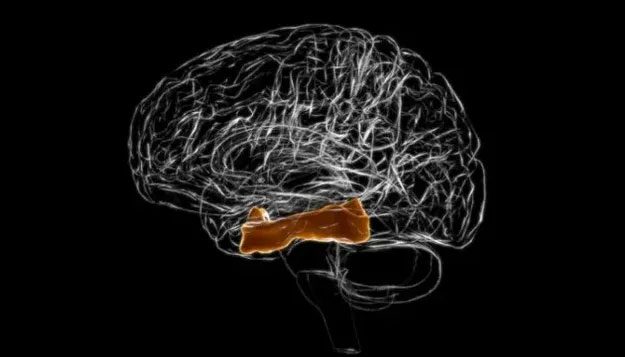Identical twins often share strikingly similar characteristics, making it nearly impossible for outsiders to tell them apart without prior knowledge of their parents. Research indicates that humans can identify these twin pairs by using non-facial features such as moles, freckles, and scars for recognition, rather than comparing minute details like eyes, nose, or mouth.
Identical Twins Are Difficult to Distinguish Using Conventional Identification Methods
Most smartphones today come equipped with a reliable facial recognition system. However, even the most advanced artificial intelligence-based facial recognition systems struggle to identify a person if they start wearing glasses or change their hairstyle. Compared to a 2-year-old child who can consistently recognize their mother’s face regardless of her clothing or hairstyle changes, these systems seem rather inadequate. Due to such limitations, facial recognition technology has become a focal point of interest for artificial intelligence system developers.
One of the most challenging questions in the field of human facial recognition research is how to distinguish between identical twins, as they share the same genetic material, and even traditional personal identification methods like DNA or blood tests fail to differentiate them.

Identical twins are very hard to distinguish in the usual way.
This article aims to unlock the mysteries surrounding this issue, which not only aids in developing biometric techniques to differentiate identical twins but also refines recognition algorithms while minimizing errors in identifying individuals.
How Facial Recognition Works in the Brain
To understand how to distinguish identical twins, we should first explore how facial recognition operates. The brain regions responsible for visual processing are known to specialize in recognizing human faces. Neurons in this area are specifically tuned to process holistic patterns, identifying entire faces while also recognizing distinct facial features to compile facial recognition information. This neuron cluster is located in the lower part of the temporal lobe (the lobe just behind your ear), cleverly named the “Fusiform Face Area.”

Facial recognition is entirely processed by the Fusiform Face Area.
To demonstrate this, scientists scanned the brains of individuals as they viewed random objects compared to actual faces. The neurons in this area only activated selectively in response to faces, proving their high specialization. Recent experiments with congenitally blind individuals also showed that they have “non-visual” experiences that contribute to their ability to recognize faces.
Users can also identify faces by touch, similarly to how sighted individuals observe. This fascinating discovery has “revolutionized” our understanding of human facial recognition, challenging the notion that this brain region solely governs visual processing.
Traditionally, while facial recognition is entirely processed by the Fusiform Face Area, many recent studies have altered this “conservative” view. In reality, facial recognition does not originate from a single area but rather from a hierarchical network of several brain regions. This includes areas responsible for emotional recognition and facial expressions to decode meanings, recall information, and link it with familiar faces, learn the characteristics of new faces, or recognize old ones. Consequently, facial recognition in humans is understood to be much more complex and enigmatic than previously thought. Given this inherent complexity, it is not surprising that we can accurately recognize faces even among identical twins.
We Can Distinguish Identical Twins
Scientists are still not entirely confident that humans have a reliable ability to differentiate between identical twins. The primary question they are trying to answer is whether we are skilled at recognizing and distinguishing identical twins, and if so, how?
In a 2011 study, scientists presented a pair of human faces to a group of participants and asked whether they could confirm if they were the same person or a pair of identical twins. The participants responded based on a certainty scale, and after completing the task, they were also asked what helped them make their decision.
The results of the study surprised the scientists, as participants accurately distinguished between identical twin pairs. They reported using cues such as moles, scars, and freckles, while others compared facial features like eyes, nose, and mouth, which showed lower accuracy.
Another significant finding from the study was that when not time-restricted in providing answers, participants could more accurately distinguish between twins. This suggests that given more time, humans can identify subtle differences in facial features to make accurate decisions in recognizing twins.
Thus, with enough time and specific cues, humans can indeed distinguish between identical twins.
Even Twins Struggle to Recognize… Themselves
You might think that the best way to distinguish twins is to ask them directly. Surprisingly, a recent study on the facial recognition abilities of identical twins revealed that the “insiders” also face difficulties. Particularly, identical twins showed they do not have much advantage in recognizing their faces compared to their twin’s face.

The more twins believe they are different, the more they demonstrate this advantage in facial recognition.
Ordinary individuals have a certain ability to recognize and distinguish their faces from others, but identical twins lack this. Interestingly, the belief of twins about their similarity to each other influences their recognition ability; in other words, it takes away their “self-advantage.” This means that if twins believe they are less alike, they will demonstrate an advantage in recognizing their own faces.
Additionally, the study reported a connection between the psychological attachment of twins and their self-recognition ability. This highlights the bond between psychology, belief, and our facial recognition capabilities.
Researching how we recognize identical twins greatly interests scientists as it will aid in developing highly accurate facial recognition algorithms for biometric purposes.

















































